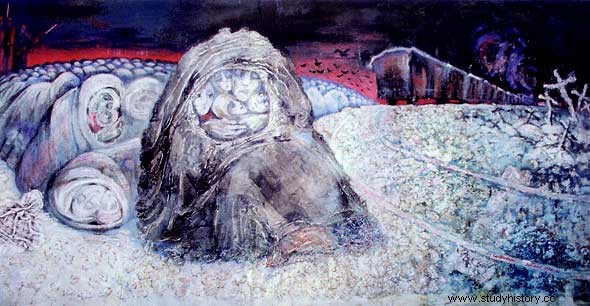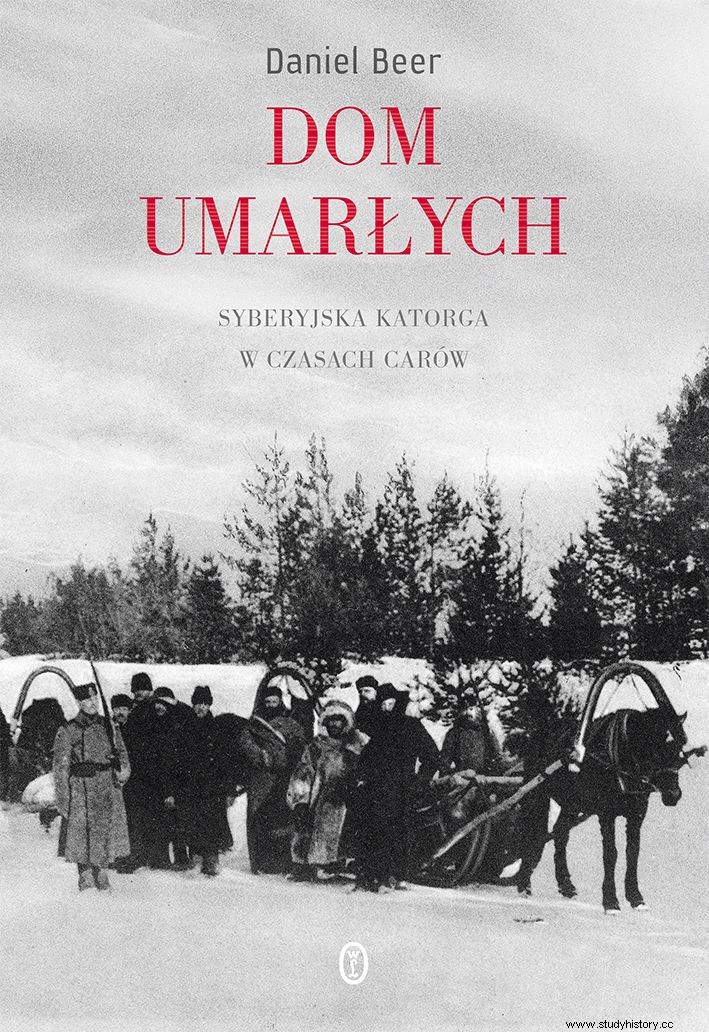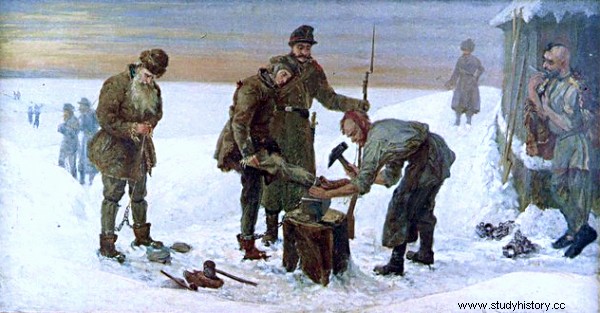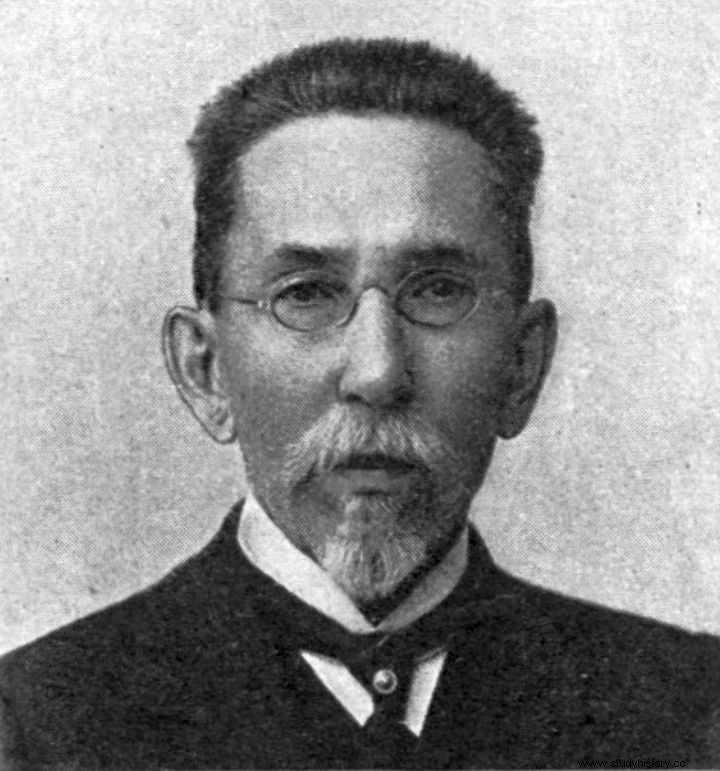Hungry, emaciated and sick, they died in front of their mothers. Those that survived were ordinary sexual objects and often trafficked. Both convicts and natives could do with them literally anything
Many a contemporary traveler praises the beauty of its austere and wild landscape, but for millions of subjects of tsarist Russia, the word "Siberia" simply meant a slow death. It was called "the cursed earth." For Fyodor Dostoyevsky, who spent four years in prison, it was associated with the "house of the dead". One thing is certain - this wild land located in the Asian part of Russia has been the largest prison in the world over the centuries.
Beyond the Urals, Siberia covers an enormous area of over ten million square kilometers - roughly the size of the entire European continent. The rulers of Russia had a specific idea for the development of this space. For centuries, they sent all inconvenient and unnecessary citizens there:common thugs, politically suspects, troublemakers, liberals, socialists, insurgents. She was a vessel into which the empire dumped its waste. Only in one aspect it did not resemble a traditional prison or even a penal colony - the fate of common and extraordinary prisoners was also shared by God in their children.
To hard labor with her husband
At first, they came to Siberia together with those sentenced to exile or forced labor. They were part of a group of "voluntary" people, that is, people who decided to accompany their relatives in their distress. Most often they were the wives of convicts who took the words of the marriage vow seriously and decided not to leave their husband until his death. Moreover, as Daniel Beer writes in his latest book " House of the Dead. Siberian hard labor during the times of the tsars ":
The state encouraged (…) the wives of convicts to accompany their husbands on their way beyond the Urals, believing that their presence would have a soothing and rehabilitating effect on the exiles in general. The government even issued new laws obliging the wives of administratively convicted persons (and, if the owner of the peasants, who was to receive appropriate compensation, consented to their children), to go with them to Siberia .

Their spouses often traveled with the convicts, often with their children. Some, however, gave birth while traveling or in exile. Stefan Centomirski's painting "In exile".
So whole families went on a long wander. Men made up only 3 percent of the "voluntary", women about 30 percent. The other "voluntary" ones were children - although in their case it is difficult to talk about an independent decision.
Symbolic prison gate
By the road, some 2.5 thousand kilometers from the capital city of St. Petersburg, there was a symbolic prison gate, or rather the border between the world of the living and the dead. Only an inconspicuous obelisk stood there. It was informative - on one side it read "Europe" and on the other - "Asia". The lucky ones who got there - the terrible conditions of wandering generated enormous mortality, especially for the weakest. As Daniel Beer relates in the book " House of the Dead. Siberian hard labor during the times of the tsars ":
In 1875 alone, 1030 children lost their lives on their way to Siberia . They died either in the temporary prisons of Moscow, Nizhny Novgorod, Kazan and Perm, or in "stages", that is, in places of accommodation. (...) The calculations of Nikolai Yadrintsev showed that due to the scandalous lack of medical care, half of the children did not manage to survive the way to their parents' place of exile.
Unwanted children
Those who arrived with their parents shared their fate and grew up in the harsh Siberian conditions. Over time, new generations were born into the world, already born in exile or in prison. In the study by historian Elżbieta Kaczyńska "Siberia:the greatest prison in the world" we read:
The fertility rate was not high, and the infant mortality rate was high, and the baby was generally undesirable, as it increased the risk of starvation. (...) Dirty and hungry children ran around in rags and looked after themselves:they could not play anything but chases, seizing, punishing and imprisonment .

They were unwanted unfortunates who had not had a chance to grow up in a normal world. Dirt, hunger and disease were their daily routine.
Tanks of infectious diseases
Their ordinary world was overcrowded and poorly ventilated cells, which carried the terrible stench of excrement-filled buckets. No wonder that epidemics often broke out here. The children suffered from pneumonia, tuberculosis, but typhus turned out to be the most deadly.
Each infected person was immediately directed to the prison infirmary, where the stay in the usual cell described above can be compared to a weekend at a spa. All infected were kept in such a medical facility; So he was not a hospital, but an isolation room and a dying room, where young patients, left alone, waited for death.
Innocent cohabitation
Siberian children may have forgotten something as obvious in the normal world as education and proper upbringing. In 1899 alone, there were about 5,000 descendants of prisoners and convicts in Siberia - while only 59 of them started school. Of course, this condition can be blamed on a sparse and too scattered network of educational institutions. However, researchers have no doubts that the problem was elsewhere. In Daniel Beer's latest book " House of the Dead. Siberian hard labor during the times of the tsars ” we read:
In coeducational schools, it was fashionable to "play" concubinage. The children also played "tramps", acting out scenes of arson and mass murders. "I'll be your woman and we'll live together in the village," a girl muttered, and a little boy threatened, "I'll cut your throat" .

Siberian children adopted the role models of adults. Captivity and brutal violence became their "normal". Aleksander Sochaczewski's painting "Putting on handcuffs".
When few of the minors entered school, it was too late. Growing up in the prison realities, they automatically adopted models from the world of adults, which in Siberian conditions turned out to be alarming.
Widespread daughter trade
The realities of Siberia were ruled by brutal rules imposed by depraved, demoralized and desperate men. Every woman was worth its weight in gold - statistically, one was for about twelve men. Rapes were commonplace, and prostitution was rampant. When women of the fair sex were not enough to meet the sexual needs of prisoners and guards, children became victims of sexual harassment. As Daniel Beer writes in his book " The House of the Dead ":
The English explorer Charles Henry Hawes, who visited Sakhalin in 1903, was shocked by the "willingness of fathers to sell their daughters" and was probably only slightly exaggerating by saying that " there is not a single girl on this island who is nine years old and still a virgin ".
During his stay in Sakhalin, Dmitry Dril, an official of the Russian Ministry of the Interior, met a nine-year-old girl, "whose reproductive organs were already showing symptoms of syphilis". This island, where an additional penal colony was established in the 19th century, was the most terrifying part of Siberia for convicts.

Even an official of the Russian Ministry of the Interior, Dmitry Dril (pictured), when visiting Sakhalin Island (one of the Eastern Siberian oblasts) was shocked by the extent of child sexual abuse there.
Old little ones
The most shocking, however, is how children learned the rules of the game in this hellish world. The disintegration of the family institution, the absolute demoralization of the surroundings made even creatures several years old resemble the surrounding troglodytes. Eleven-year-old boys drank, smoked and talked about women. Their peers accepted a world order in which they were only a sexual object, collectively owned by a group of colleagues .
I have fifteen, seventeen and nineteen-year-old girls on my ward who had sexual intercourse at the age of twelve and now cannot do without vodka, filth and foul language. - the shocked nurse wrote, as quoted by Daniel Beer.
Worthy followers after the fall of tsarism
The greatest prison in the world even survived the machine that created it. In 1917, the Bolsheviks seized power in Russia. The tsar was overthrown, and in July 1918, Nicholas II and his whole family were murdered. The change of the political system did not mean the end of deportations - in this case the tradition of tsarist Russia was continued and precisely improved, the best proof of which is the archipelago of concentration camps created by the communists, the Gulag.
Bibliography:
- Daniel Beer, House of the Dead. Siberian torture under the rule of the Tsars , trans. Michał Roniker, Wydawnictwo Literackie, Krakow 2018.
- Zbigniew Łukawski, History of Siberia , National Institute for them. Ossoliński, Wrocław 1981.
- Elżbieta Kaczyńska, Siberia:the largest prison in the world (1815-1914) , Gryf Publishing House, Warsaw 1991.
A journey through the history of an ice-bound prison that has become a grave for thousands of Poles and Russians:

